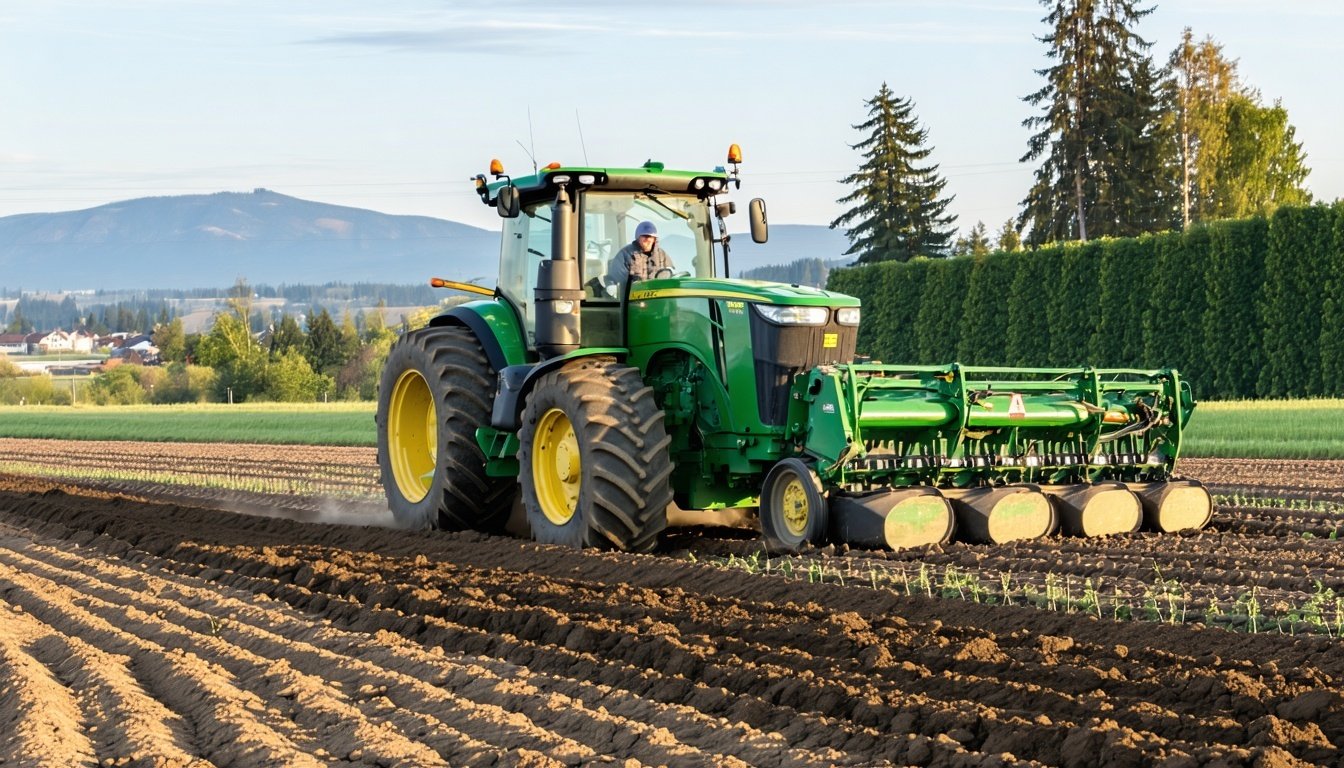Funding Solutions for Washington’s Agricultural Industry
Washington State agriculture spans from apple orchards and wheat fields to dairy farms, vineyards, and niche organic crops. Operating in such a diverse landscape means managing seasonal risk, high upfront costs, and fluctuating markets. That’s why smart funding solutions are vital for sustaining and growing your farming operation.
This guide dives into the best funding options for Washington farmers and ranchers—covering federal and state loans, grants, CDFIs, tax relief, and disaster assistance—to help you plan, grow, and adapt.
Why Washington Agriculturists Need Financing
Farming is capital‑intensive, and farmers often face:
-
Land purchase or lease
-
Buying machinery and equipment
-
Seasonal labor and input costs (seed, feed, fuel)
-
Building infrastructure (barns, irrigation, storage)
-
Managing cash flow between planting and harvest
-
Covering losses from drought, pests, or market fluctuations
🌱 To sustain a profitable operation and invest in innovation or expansion, financing isn’t optional—it’s essential.
1. USDA Farm Service Agency (FSA) Loans
The USDA’s FSA provides low‑interest loans directly to farmers and ranchers in Washington.
Loan Types:
-
Farm Operating Loans – Up to $300,000 for day‑to‑day expenses such as seed, feed, labor, and inputs extension.wsu.edusba.gov+2fsa.usda.gov+2fsa.usda.gov+2
-
Farm Ownership Loans – Up to $300,000 for land purchase or capital improvements fsa.usda.gov
-
Direct Microloans – Up to $50,000 with simplified application for beginning farmers extension.wsu.edu+6fsa.usda.gov+6agr.wa.gov+6
-
Emergency Loans – For losses from natural disasters
Pros: Affordable rates, reserved shares for beginner/underserved farmers
Cons: Slower approval, USDA income eligibility criteria
2. Washington State Beginning Farmer/Rancher Program
The Housing Finance Commission and Northwest Farm Credit Service offer tax‑exempt bonds to help new farmers acquire land or equipment.
-
Loan Limit: Up to $649,400 for land; separate caps for equipment fsa.usda.gov+7sba.gov+7sba.gov+7farmlandinfo.org+1resolvepay.com+1wshfc.org
-
Can be combined with FSA, private, or other loans
3. Farm Credit & CDFI Financing
🏦 Farm Credit System
-
Independent, borrower‑owned institutions
-
Provides flexible financing for land, livestock, crop operations sba.gov+15en.wikipedia.org+15farmers.gov+15
💼 Craft3
-
A regional nonprofit CDFI offering farm and food system loans
-
Supports underserved and sustainable agriculture farmlandinfo.org+3extension.wsu.edu+3snohomishcd.org+3
4. Grant Programs & Cost‑Share Incentives
Washington offers multiple grants for infrastructure, conservation, and value‑added projects:
-
WSDA Farm Storage & Local Food Grants for equipment and infrastructure ambrook.comen.wikipedia.org+1en.wikipedia.org+1
-
Resilient Food System Infrastructure Grants support mid‑sized producers agr.wa.gov
-
NRCS Conservation Programs (EQIP, CRP, CTA) for practice adoption and sustainability snohomishcd.org+14en.wikipedia.org+14agr.wa.gov+14
-
USDA SARE grants for sustainable ag research and education (up to $75K) agr.wa.gov+5en.wikipedia.org+5agr.wa.gov+5
5. SBA Disaster & Rural Loans
🌾 USDA REAP Loans/Grants
-
Funds renewable energy/efficiency improvements – local utility savings
🌀 SBA EIDL Disaster Loans
-
Low‑interest loans for economic losses due to drought, floods, wildfires
-
Recent outreach centers opened after Nov 2024’s bomb cyclone en.wikipedia.orgsba.gov+1sba.gov+1
🌍 SBA International Trade Loans
-
Support ag exports and global market growth agr.wa.gov+4en.wikipedia.org+4business.wa.gov+4
7-Step Funding Process for Washington Farmers (Featured Snippet)
-
Identify capital need: land, equipment, disaster relief
-
Choose the right loan or grant program
-
Pre‑qualify with FSA, CDFI, or lender
-
Gather documents: financials, tax returns, operation plan
-
Apply and complete underwriting
-
Accept funds and implement your project
-
Monitor expenses and repayment or compliance
6. Tax & Incentive Options
-
Farm and Food Production Tax Credit (WSDA) – for value‑added processing
-
Conservation Expense Write‑Offs – under federal conservation programs
-
Clean Water State Revolving Fund (CWSRF) – low‑interest loans for water quality projects sba.gov+8investopedia.com+8resolvepay.com+8extension.wsu.eduen.wikipedia.org
Real Example: Expansion of Organic Berry Farm
Operation: Cascadia Berries (Chelan County)
Needs: New refrigeration, packaging line, storage shed
Funding Mix:
-
$200K FSA Farm Ownership loan
-
$100K Craft3 equipment loan
-
$50K WSDA infrastructure grant
Outcome: -
Doubled cold storage capacity
-
Increased revenue 40%–50%
-
Added three seasonal employees within a year
7. Local Agricultural Support Resources
-
WSDA Farm Business Support Division – Funding guides, application help fsa.usda.govextension.wsu.edu
-
Washington SBDC Rural Counseling – Business, financial, and loan planning
-
SCORE Rural Mentoring – Free expert coaching on funding
-
NRCS & Conservation Districts – Provide technical assistance and cost‑share info
(Placeholder for 4 diverse images: orchards, farm equipment, grant ceremony, irrigation system)
Pros and Cons of Washington Ag Funding
| Pros | Cons |
|---|---|
| Low-cost USDA & state loans with long repayment terms | Long application and approval timelines |
| Grants and cost-share reduce net investment needs | Competitive and often require match or specific eligibility criteria |
| CDFIs and tax-exempt bonds aid beginners & underserved groups | Some grants limited to infrastructure or value-added uses |
| Disaster and export loans support resilience and market growth | Documentation and compliance demands can be high |
Conclusion: Grow Washington’s Farms with Smart Financing
Washington offers a diverse toolkit of loans, grants, tax programs, CDFIs, and federal aid to help your farm succeed—whether you’re buying land, installing irrigation, or exporting apples. By aligning your goals with the optimal funding mix, you can expand operations, manage risk, and build a sustainable farm business.
Final CTA:
Ready to unlock funding for your Washington farm?
Reach out to FSA, NSDC/Craft3, and your local conservation office—or schedule a free session with the Washington SBDC—to start your project with confidence.











